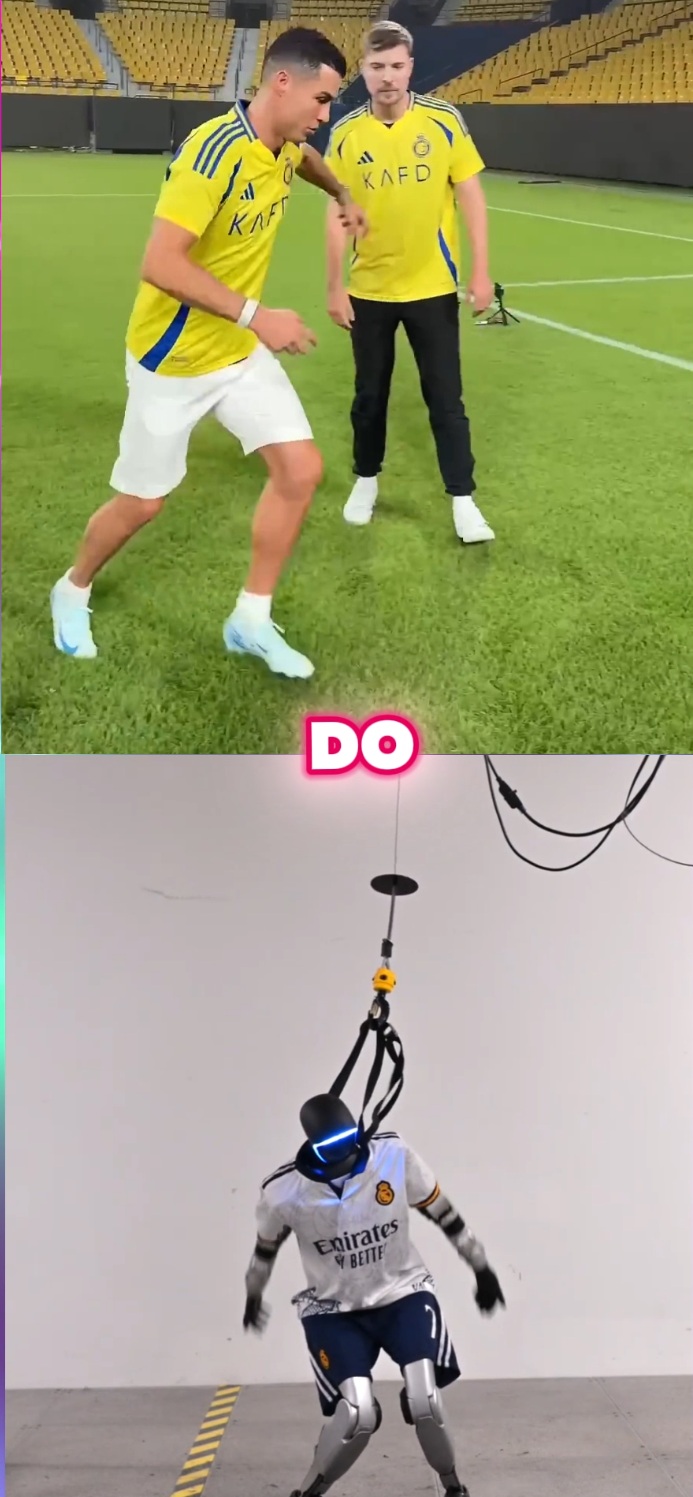Ronaldo’s “Siuuu” Celebration Reimagined: Robots Mimic Iconic Athlete Moves with Cutting-Edge AI

Introduction
In a groundbreaking fusion of sports and robotics, researchers have unveiled an advanced AI framework that allows humanoid robots to perform complex, full-body athletic movements—including Cristiano Ronaldo’s iconic “Siuuu” celebration. This innovative development, pioneered by teams at Carnegie Mellon University and NVIDIA, is set to redefine the future of robotic motion by merging high-fidelity simulation with real-world physics. This blog delves into the technology behind this breakthrough, its potential applications, and what it means for the future of robotics and AI.
The Science Behind the Movement
What Is the ASAP Framework?
At the core of this innovation is the Aligning Simulation and Real Physics (ASAP) framework. Designed to bridge the gap between simulated motion and real-world execution, ASAP leverages a two-step process:
- Motion Capture & Simulation:
The system begins by analyzing 3D human motions captured from video footage. By reconstructing these movements in a virtual environment, the framework creates a detailed simulation that accurately represents even the most dynamic actions, such as Ronaldo’s celebrated mid-air spin and powerful landing. - Reinforcement Learning & Real-World Deployment:
Once the simulation is ready, a reinforcement learning policy is trained to mimic the captured movements. This policy is then transferred to a humanoid robot, enabling it to perform the motion with physical feasibility and precision. This step ensures that the robotic execution remains true to the original human action while adhering to the constraints of real-world dynamics.
Bringing Ronaldo’s “Siuuu” to Life
Cristiano Ronaldo’s “Siuuu” celebration—a move characterized by a soaring leap, a dramatic mid-air spin, and a forceful, grounded landing—has captivated millions of sports fans worldwide. With the ASAP framework, this celebrated motion is no longer confined to the football pitch. Researchers have successfully trained robots to execute this exact celebration, marking a significant milestone in robotic agility and athletic mimicry.
The ability to replicate such an intricate move requires precision engineering in motion capture, sophisticated simulation algorithms, and robust reinforcement learning models. The success of this project highlights how AI can transcend traditional boundaries, offering robots a new level of fluidity and expressiveness in motion.
Expanding the Athletic Repertoire
While Ronaldo’s move has garnered the most attention, the research isn’t stopping there. The same framework has been used to train robots to emulate other famous athletic maneuvers, including:
- Kobe Bryant’s Fadeaway Jump Shot: A move that demands balance, timing, and precision.
- LeBron James’ “Silencer” Move: A dynamic action emphasizing power and agility.
These examples illustrate the versatility of the ASAP framework and its potential to revolutionize the way we think about robotic performance in sports, entertainment, and beyond.
Implications and Future Directions
Enhancing Robotics Through AI
The integration of reinforcement learning with realistic simulation represents a leap forward in robotics. By enabling robots to learn and adapt complex human movements, researchers are not only pushing the boundaries of what machines can do but also opening doors to applications in:
- Entertainment: Creating interactive experiences where robots perform human-like routines.
- Sports Training: Offering new ways to analyze and simulate athletic performance.
- Rehabilitation: Developing assistive robots that can mimic natural human motion for therapeutic purposes.
Challenges Ahead
Despite the impressive achievements, researchers acknowledge that further refinements are needed to achieve human-like fluidity and natural athleticism. As the technology evolves, overcoming these challenges will be crucial in making robotic movements indistinguishable from their human counterparts.
Conclusion
The development of the ASAP framework by Carnegie Mellon University and NVIDIA marks a significant milestone in the field of robotics and artificial intelligence. By enabling robots to replicate complex movements like Cristiano Ronaldo’s “Siuuu” celebration, this breakthrough not only dazzles fans of both sports and technology but also sets the stage for future innovations in dynamic robotic performance.
As we watch the line between human athleticism and robotic precision blur, one thing becomes clear: the future of robotics is not only agile and powerful but also strikingly expressive. Stay tuned as we continue to explore the next frontier of AI-driven motion.
